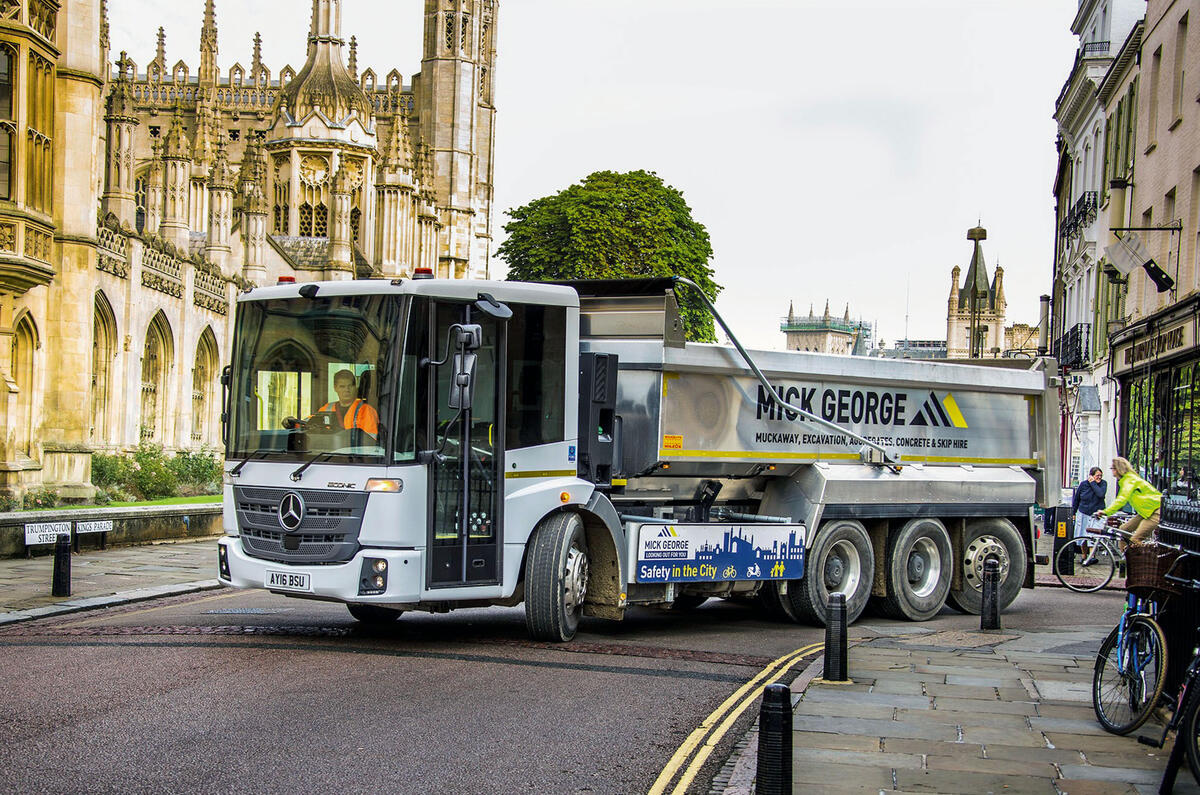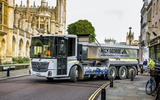Have you heard of a blindspot lorry? No, of course you haven’t, in the same way that two decades ago you wouldn’t have heard of a gas guzzler or known what a credit crunch was. Until a few days ago, a lorry was just a lorry.
But you will have heard of them soon, because of an impending ban on them in London. Lorries that come into the capital are about to get rated on how good visibility is from the driver’s cab. Those rated zero stars – and Transport for London thinks there are 35,000 of them on the capital’s roads – will be banned from entering London by 2020. Those with fewer than three stars will be outlawed in the capital by 2024.
Why? Because heavy commercial vehicles account for only 5% of road traffic yet more than half of cyclist fatalities, and the problem is bigger in London than anywhere else. The gravest danger comes from construction lorries, made for building sites, of which there are many in London because they haven’t finished building it. These trucks ride high, with tall cabs and limited downward visibility, because they weren’t designed to be used near the vulnerable road users with which they now routinely find themselves sharing sparse road space. New rules from the office of the mayor of London, Sadiq Khan, that might necessitate bigger windows, seethrough doors or more cameras and mirrors will hopefully set London on a path to fewer road deaths. They will also change the shape of lorries travelling into the capital. And in turn, they will change the shape of lorries across the nation and beyond.

As a result, truck makers will have to be able to react quickly to local (if you can call a city with more than 10 million people in it during the day ‘local’) regulations. Because it’s London – and why would you want to miss out on a market the size of that? – they will respond.
It’s something car manufacturers will increasingly have to respond to, too, as city authorities look to improve air quality and safety and endeavour to move faster at a local level than national or international governments manage. Paris is banning cars over 20 years old, and Oxford runs the only English low-emissions zone outside London, not that it’s helping much.











Join the debate
Add your comment
Constructive
Large trucks in our cities
I am fed-up with having to dodge trucks in supposedly pedestrian areas, and with 44 tonne Artics parked on the damm pavement! Its time these behemoths are brought under control.
Hopefuly,
You make a valid point with
"increasing self regulation"
So what you're suggesting are
The point I'm getting at is not increased regulations but better risk management, there clearly is an issue and self regulation is perhaps failing to or even hiding the risk. None of the usual authorities are concerned about highlighting the issue simply because it's the cyclist that is seen as the problem, when that is incorrect.
The only thing that has led to unnecessary deaths are incompetent haulage operators.
"incompetent haulage operators."
You're not really getting
So What you're suggesting are